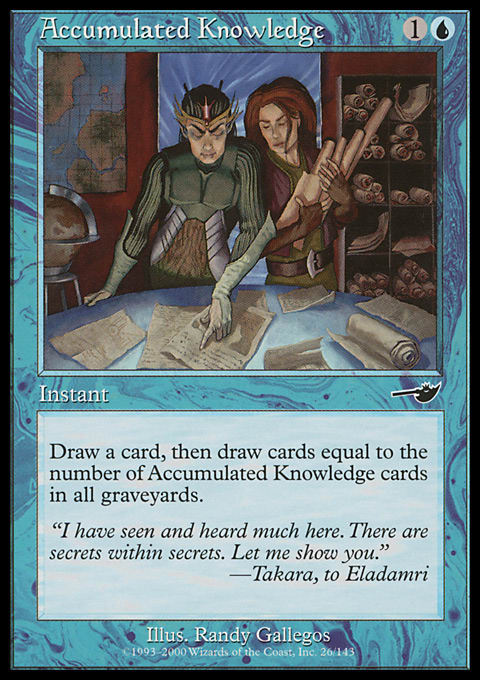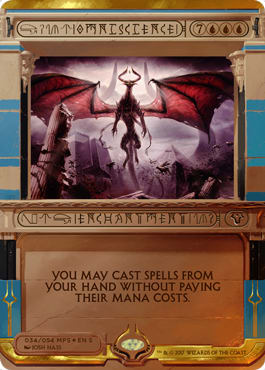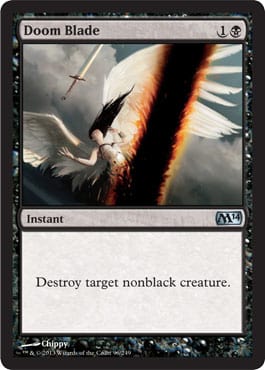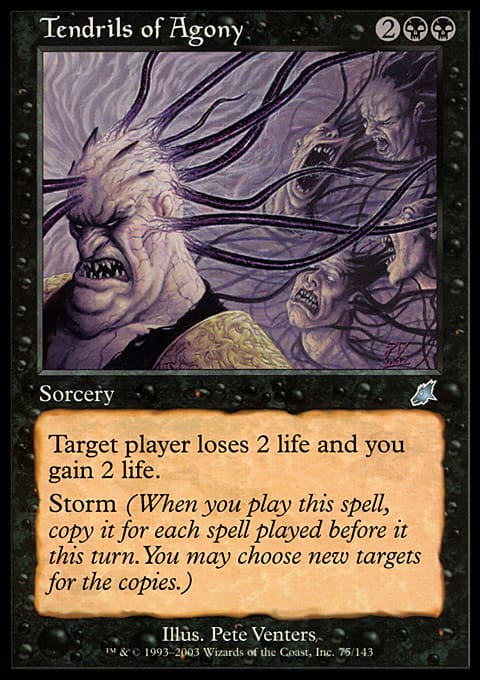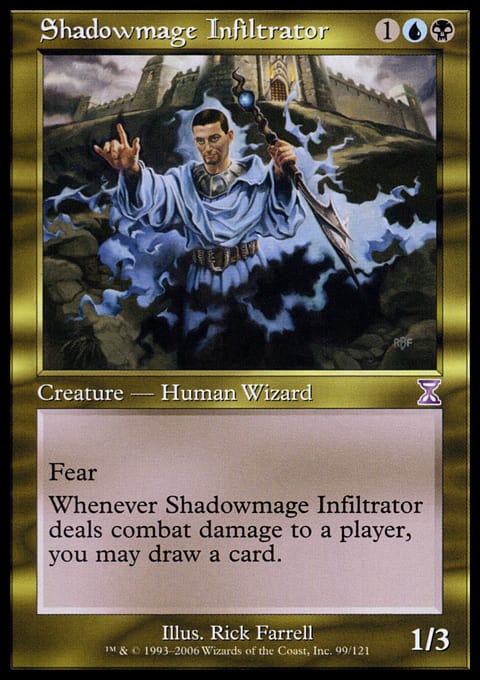Those of you who follow me know that I have a huge interest in Magic theory and have been working on the Grand Unified Theory, a step of which I am going to look at here. In rethinking my approach to this problem, I discovered that I was going about it all wrong, and upon revamping my approach, I came up with what I believe to be a reasonable solution. In essence, this served as a lesson in problem solving—something Magic players should be very familiar with.
My previous attempts at Grand Unified Theory resulted in frameworks that had aspects I was happy with, but nothing that ended up being overall great. So, I decided to start from scratch. What comes is necessary background information for understanding where Magic theory came from and where it is now. This is based on my reading and understanding of many Magic articles over the years. While it is not necessary to read these articles, I do believe that doing so will give you a more complete understanding of the course of Magic theory throughout this game’s history. I have revisited some of these articles and concepts before, and if you are interested in my take, you can peruse my archives. I will also include a further-reading section at the end of this article, which I will reference with endnotes in order to minimize the intrusiveness of the references.
Anyway, back to the matter at hand: Where is Magic theory right now, and what are the holes that we have to fill? Well, any discussion or formulation of Magic theory has to begin with, at least currently, the two central tenets of Magic theory: The Philosophy of Fire and Card Advantage.1 These two ideas have formed the core of Magic theory for a while, and that’s because they do provide us with some very basic and useful concepts for analysis and application to individual play lines. Card Advantage is particularly robust and is not only applicable to Magic, but to other games as well.
These concepts are very accurate and well defined, thus making them useful to us. But the question is, How do we build any sort of model around them? The problem is that our various, disparate ideas are not very well connected. Card Advantage, the Philosophy of Fire, Velocity, Who’s the Beatdown?, Stage Theory, and various other concepts have all appeared and been, in some way, utile, but how do we connect them all?
Building a Model – Chapin vs. Sacher
I am not the first one to do work on Grand Unified Theory. At the moment, I believe there are two major approaches to the problem, represented by AJ Sacher and Patrick Chapin.2 So, what did these two theorists attempt to do to unify our disparate concepts?
Sacher’s approach is a logical one: Attempt to create a metric. If we can create some form of metric to measure advantage, we can use that metric to unify any concepts. In many ways, this is analogous to the way exchange rates work. Each country in our world has its own separate economy and currency. However, we have a system of currency exchange that tells us how to value different currencies at any given moment, thus allowing for a common ground for trade. In a similar way, if you could create a metric to measure advantage in any given trade in Magic, you have gone a long way toward unifying every concept within our game. Each concept would have a given value in whatever metric you are using, thus allowing you to compare the relative value of each concept at any given point.
When I first began looking at Grand Unified Theory, I agreed with this approach. However, I felt that there were flaws in Sacher’s methodology. Thus, I took my own stab at creating a metric to measure advantage in Magic, and in homage to Sacher’s original idea, I called it Marginal Mana. The basic principle behind the system was that advantage in Magic is not absolute, it is relative; thus, the way to measure advantage was to produce a system that measured you relative to your opponent. In effect, this system is basically an extension of Stock Mana, used on both players then combined to form a single value.
The problem I ran into was that this metric is impractical and almost completely useless in any real game situation. Sure, it may have some value as an abstraction, but it doesn’t really solve any problems. The problem with the theory is that it is impractical to apply in any individual game state. If you want to sit down and calculate Stock Mana, you can’t do it while playing the game.
The other problem with Stock Mana is that it doesn’t tell you why something is good or whether or not something you haven’t actually played with will be good. Consider two different 3-drops: Blade Splicer and Rhox War Monk. They are cards with very different strengths and weaknesses, and Stock Mana doesn’t really provide you any method of looking at them theoretically. You can do some minimal analysis based on expected value, but environment can be a really big deal.
Think about it this way: If the burn spell of the format is Shock, both cards are probably pretty good against aggressive decks packing burn. But what if the burn spell is Lightning Bolt? If that’s the case, Rhox War Monk is probably significantly better than Blade Splicer because it dodges the format’s burn spell very well. If you Bolt the Golem token, the 1/1 that Blade Splicer leaves around is not particularly threatening. Sure, cards like Restoration Angel can change that, but for the most part, Rhox War Monk is going to be much stronger than Blade Splicer.
If you performed a theoretical analysis of Stock Mana, however, I think that Blade Splicer would come out a little bit on top. If you were looking for every marginal edge, you would run Blade Splicer, which—depending on the role you are looking for the card to fulfill—could be an error because there are cases and situations in which Rhox War Monk is better. If those are the situations you are looking for a card to shine in, you are better off playing Rhox War Monk.
Stock Mana doesn’t really help you do this sort of analysis, and it thus has some major holes to fill before it gets to the point of Grand Unified Theory. The point of Grand Unified Theory, after all, is to have a theory that handles all the analysis—that you can apply it in any situation and that it will help you come to the correct conclusion. That is the ultimate goal, and while Stock Mana is almost certainly a step in the right direction, it is not the end of the line.
Chapin’s stab at this is a far more holistic one. He attempts to take a look at the game as a whole and do a kind of reverse-derivation or reverse analysis. While in some ways this is useful, it suffers from another problem: It doesn’t do anything we can’t already do.
Chapin’s idea of the continue-to-play-the-game resource is not correct, but it also doesn’t expand on anything we already know or give us a new way of thinking about things. It essentially just clarifies existing ideas. He attempts to boil down Magic into a series of resource trades to remove your opponent’s ability to play the game. This is accurate, but it doesn’t tell us how to trade resources.
Consider the following situation: You are at 5 life with no nonland permanents, and you are being attacked by Stampeding Rhino and Kavu Climber. You are holding Divine Verdict and have 4 mana available. Your opponent has no cards in hand.
Under Chapin’s model, casting Divine Verdict on either creature results in essentially the same position: You facing a lethal attack next turn. The model doesn’t in any way differentiate between killing the Stampeding Rhino and the Kavu Climber even though there is potentially a huge difference, especially if your deck is filled with a bunch of Horned Turtle variants with flyers to back them up. You might know to kill the Stampeding Rhino, but that is because Chapin’s model tells you to reference other information and other models. The actual model doesn’t assist you in this endeavor.
What Chapin’s model does is teach you how to ask a question. While this is valuable, it doesn’t give you any assistance in answering the question it poses, which means that if you don’t know how to answer the question, or if you don’t fully understand the specific concept the question wants you to use, the model is completely useless to you. This is the core problem with Chapin’s model.
Theory vs. Practice – Sullivan vs. PVDDR
Recently, there’s been another debate of sorts that’s cropped up around Paulo Vitor Damo da Rosa’s series of theory articles surrounding individual archetypes.3 PV is writing these articles from the perspective of a pro player. Thus, the divisions that PV makes are largely practical: How do you play the decks, how do you think about them, and what kind of mindset should you have when playing these sorts of decks?
These are the sorts of questions that PV sets out to answer and outline in his article series, and for the most part, he does a pretty good job. The problem is that the practical distinctions aren’t the only ones that matter. There are strategic and tactical lines that can be drawn that are important as well. In essence, there are mechanical distinctions between how various decks function.
Sullivan’s model for archetype classification is one that I’ve written about before, so I won’t go into detail here, but suffice it to say that I think it’s a very good model.4 One of the primary strengths of the model is that it not only tells you what a deck is trying to do, but how the deck is trying to do it. This focus on mechanics is important because each method of accomplishing the same task has different weaknesses and thus different potential counters.
One of PV’s comments in his aggro-control article points at this problem very well. PV said:
The issue that PV fails to recognize is that the control elements do matter, at least on a strategic level. This is one of the primary strategic distinctions between aggro and aggro-control and a main reason that you have to respond to the decks differently.
Aggro’s plan is to play a bunch of threats (creatures) and attempt to overwhelm your early defenses. If you kill aggro’s threats, aggro’s plan is to replace them. Against a plan like this one, you can beat it simply by having enough Doom Blades. If you Doom Blade each creature aggro plays as it comes out, aggro is going to have a very tough time beating you. You can do this simply by running enough Doom Blades and things that draw you Doom Blades. Thus, eventually, you will have cards left over and can kill aggro with whatever you have lying around.
Aggro-control, on the other hand, is designed to deploy a small handful of threats and protect them with control elements. This requires a different strategic response. If you simply attempt to respond to aggro-control by playing a bunch of Doom Blades and things that draw Doom Blades, aggro-control can use its control elements to punish that strategy. Aggro-control can do it in one of two ways: by denying you a critical Doom Blade or two or by denying you the ability to draw more Doom Blades.
A strategy that revolves around drawing sufficient Doom Blade against a creature-based assault is a strategy that relies on card volume. If you draw enough cards and are playing enough Doom Blades, you will see enough Doom Blades. Against an aggro deck that has no ability to disrupt this plan, it is viable. However, if you are playing against aggro-control, the ability to disrupt the plan makes it far more difficult to execute. This is not to say that the plan won’t work, but that the plan is less reliable.
I do think that PV understands that there are differences between the archetypes, but I also think that he underestimates those differences. If you simply think the way PV does and make light of the mechanical differences between the decks, you will attack the archetype from strategically inefficient angles. This will reduce your success rate in the matchup, which represents the failure of your thought process and thus your model.
However, Adrian’s model is not perfect. In fact, it draws lines in some very weird places. For example, under Adrian’s model, Faeries and Stax are both hybrid-control. This might lead you to believe, if you have never heard of either deck, that they are pretty similar. After all, they are classified under the same archetype. However, in practice, they are very different decks, play out differently, and require completely different mindsets.
The same is true under Adrian’s model for U/B Tendrils and Zoo. They are both aggro decks. So, going by Adrian’s model, similar strategies should work against both archetypes. In practice, however, if you use the same tactics against Tendrils that you do against Zoo, you will be sorely disappointed. Why? Mechanics matter, and how a deck is designed to accomplish its goals matters.
Another problem with Adrian’s model is that it relies on the idea of switching strategic moments to account for the fact that different draws play out differently. This is an inelegant way of handling draw variance. The fact of the matter is that even within a specific seventy-five, your draws can definitely play out very different strategically, and any true unified theory should be able to account for this variance as well.
Building a Solution
So, we return to the question of how to incorporate everything into a model. What do we want out of a model? The answer is to create a heuristic model designed to narrow the parameters an individual player has to consider when making a decision. There is no way for a model to tell you whether a player has a specific combat trick, but what the model can tell you is threefold:
- How bad is it for you if the player does have it?
- What’s the benefit for you if he doesn’t?
- What is the cost of playing around the trick?
The model we generate needs to be able to do a number of things:
- Be practically useful and applicable in game (solve Stock Mana’s problem)
- Tell us not only what the correct play is, but why the play is stronger in a given position (solve Chapin’s problem)
- Help us sculpt the correct play line from a variety of choices, using your specific draw (PV’s point)
- Strategically differentiate between different archetypes and be able to describe in some manner their strengths and weaknesses (Adrian’s point)
The answer lies in generalizing just enough that we can come to a single statement that is always true but that still useful. “What matters” in any given situation is the specific play line you should take with your draw in the particular board state you are facing. This is “what matters” in the abstract sense. In the specific sense, this means finding the exact tactical play that will give you the greatest benefit—the “correct play.”
The problem is that finding the correct play in the abstract is different than finding the correct play at the table. Why? Magic is a game of imperfect information. If you always had perfect information, you could always divine the correct line because your opponent would never be able to surprise you. However, because Magic is a game of imperfect information, you have to take into account what your opponent could have and make probabilistic determinations based on that. What is the abstract correct play given perfect information could be a low-probability occurrence. This means that if you take what you feel is the correct line (the one that has the highest probability of success), you might be making the abstractly incorrect play.
Any model needs to be able to deal with this idea of imperfect information. It needs to leave space for the human factor. This is why the model has to be heuristic and not a metric. You can’t measure what you don’t know. I don’t know the value of my opponent’s hand, so therefore, I can’t make any hard determination as to what is the absolute highest-value play. The play I choose is based on expected value, not actual value. Thus, I feel the correct approach for the model is to teach you how to synthesize various concepts and ideas to come up with a simple set of choices, which you choose between based on information only you as a player have access to—what you think your opponent has.
So in the next couple weeks, I will be exploring some new ideas and models that I have come up with that I feel solve a good portion of, if not all of, these issues. My basic idea was to divide the game into two levels—strategic and tactical—and construct a model for each and a method of bridging the two, a method for the two models to “talk to each other.” Next week, we’ll take a look at the strategic model.
Chingsung Chang
Conelead most everywhere and on MTGO
Khan32k5 at gmail dot com
Further Reading:
1 “ The Philosophy of Fire” by Mike Flores, "Tempo and Card Advantage" by Eric Taylor, “Counting Card Advantage” by Oscar Tan, “Virtual Card Advantage Theory” by Geordie Tait
2 “The Theory of Everything” by Patrick Chapin, “The Theory of Stock Mana” by AJ Sacher, “Stock Mana Revisited” by AJ Sacher
3 “Combo”, “Aggro-Control”, “Control”, “Aggro” all by Paulo Vitor Damo da Rosa
4 “The Strategic Moment” by Adrian Sullivan
I did provide a reason for disliking it: It will lead you to play the decks differently. I think those decks should be played as aggro decks, so thinking you have a control component when you actually don't is harmful. You might not agree, but my reasoning was there.
















